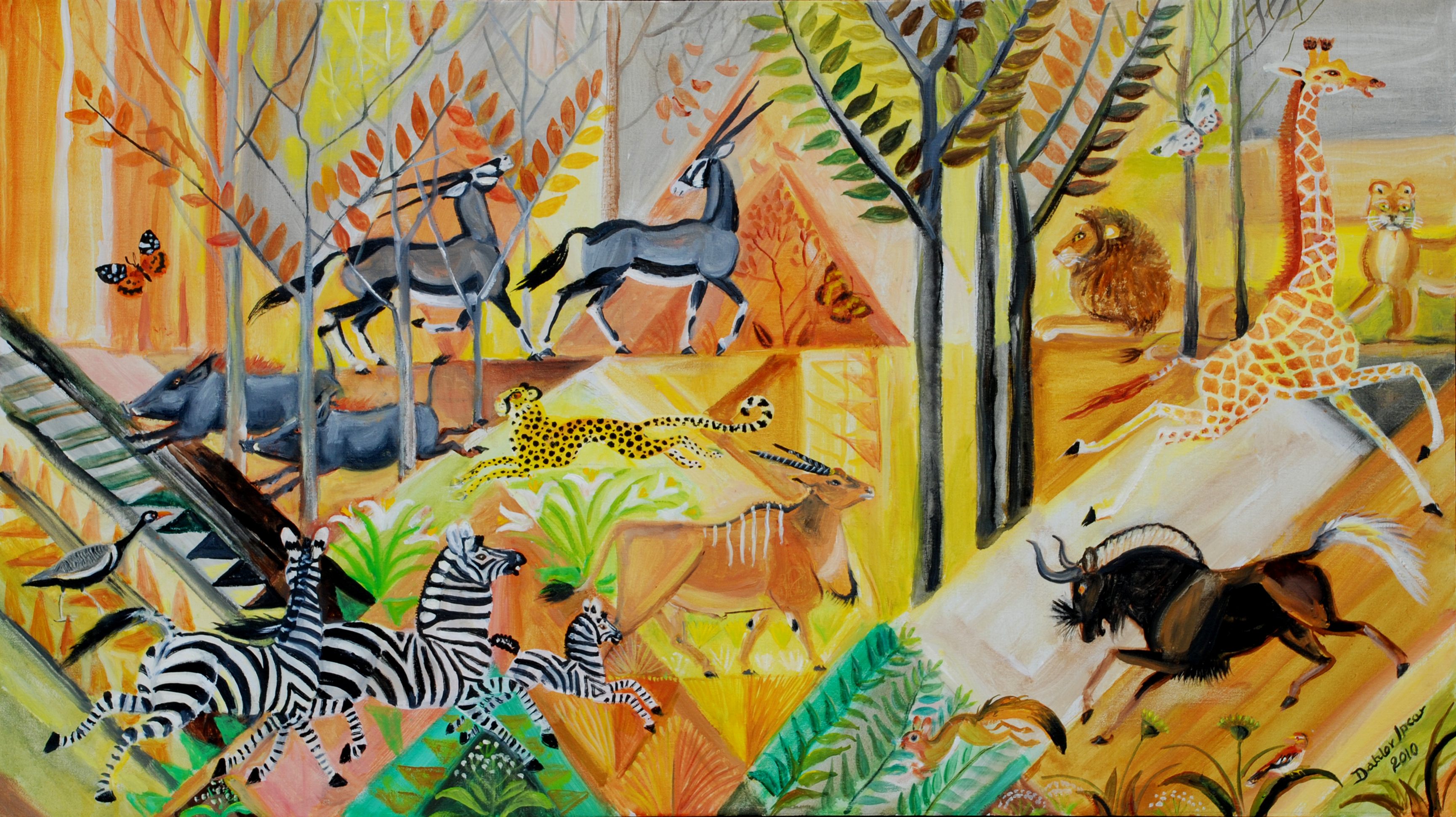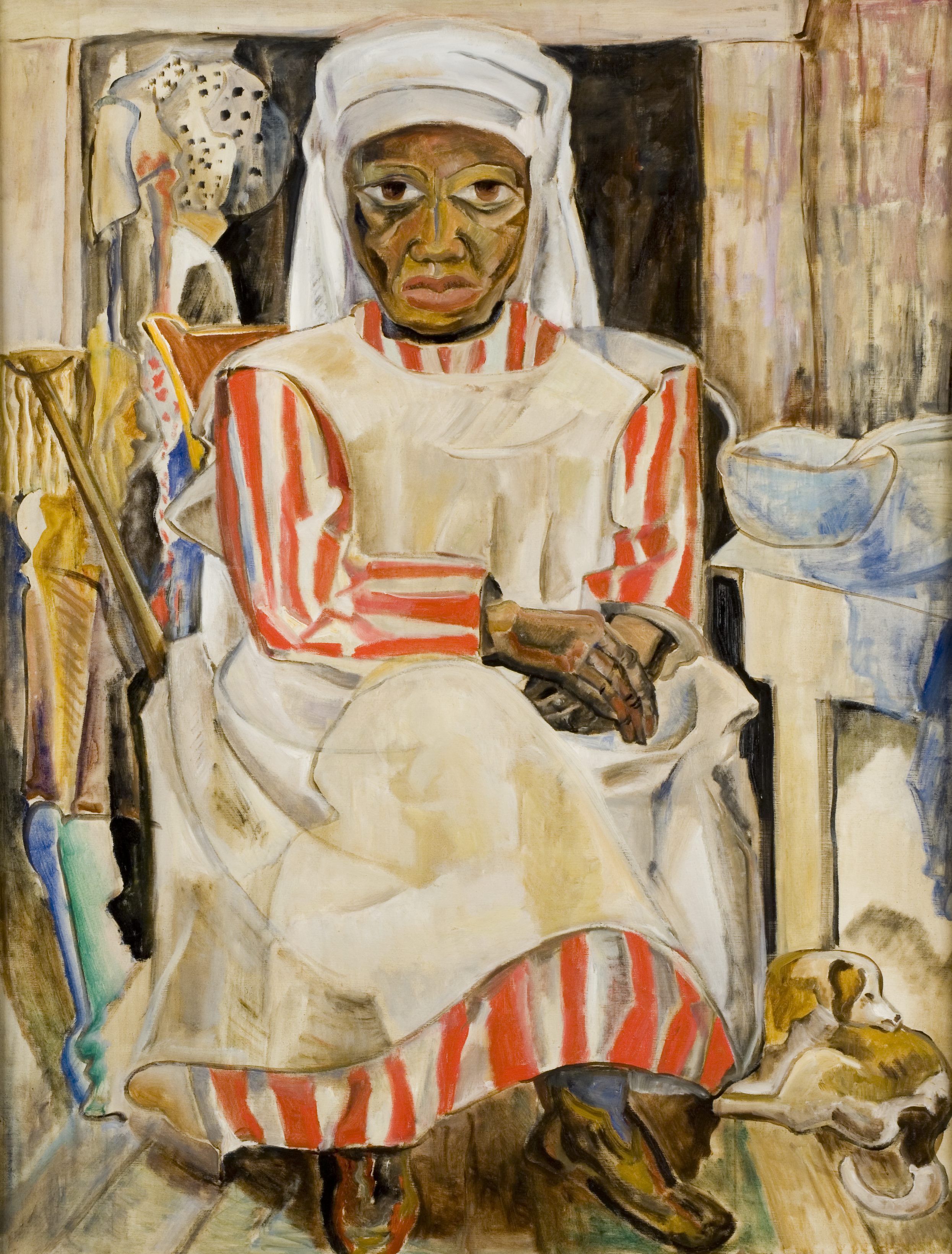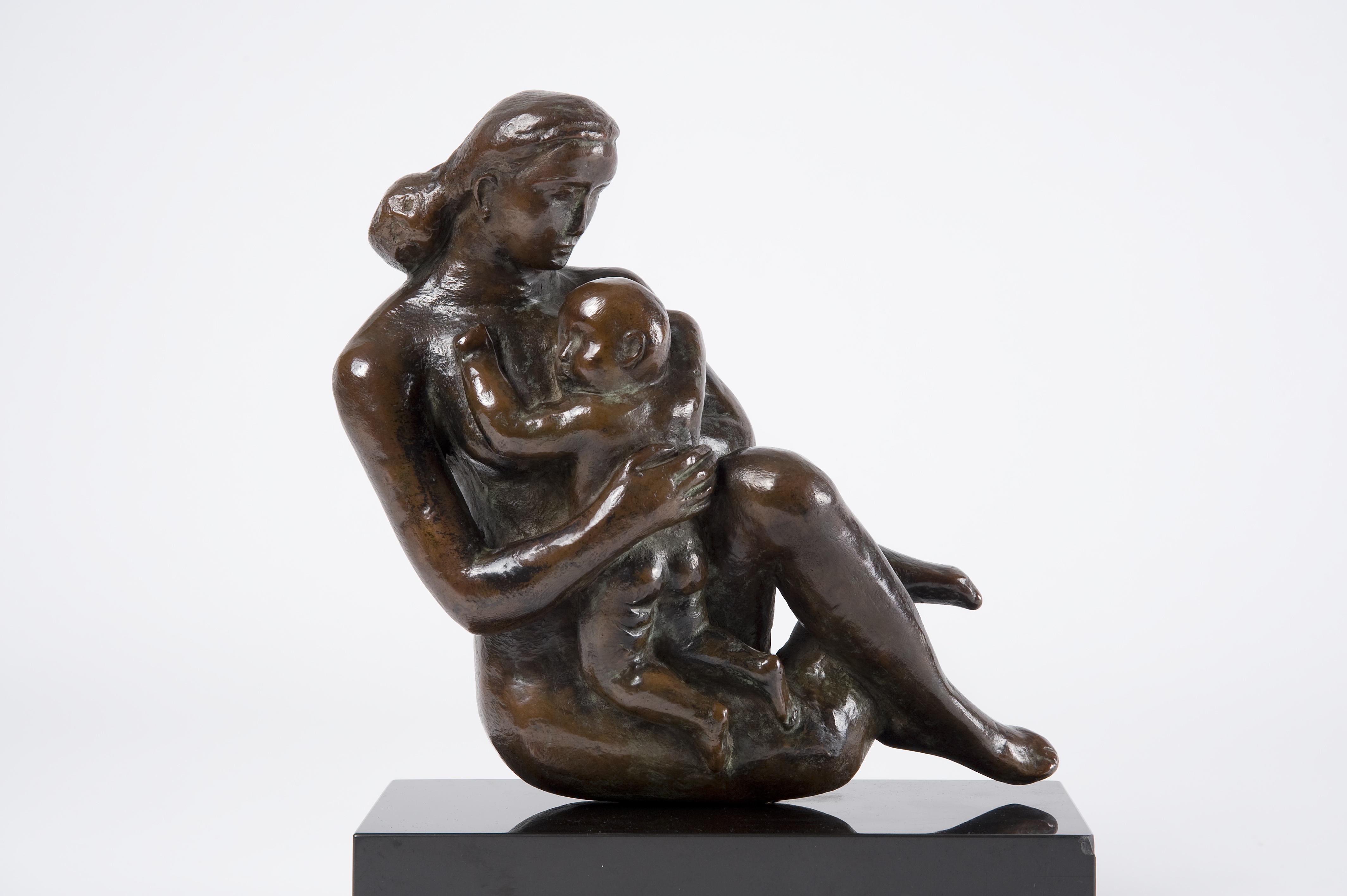Dahlov Ipcar at Samsøn Projects in Boston
July 12, 2015

Dahlov Ipcar is an American icon perhaps most well known for the more than 30 children’s books she illustrated, beginning in the 1940s. She is a prolific and accomplished painter as well, though, and a unique sampling of her original paintings can be seen this month at Samsøn Projects, an art gallery in Boston, alongside paintings and sculptures by her parents, the renowned artists Marguerite and William Zorach (www.samsonprojects.com).
A first glance in Samsøn Project’s modest gallery space, on a quiet, tree-lined pedestrian street in Boston’s South End, reveals several different artists on display. To the left, along one long, straight white wall hang a dozen modestly sized paintings, heavily detailed, intensely chromatic and visually complicated, wrapped in simple wood slats; these are the works of Dahlov Ipcar. To the right along a parallel, equally long, straight white wall hang fewer, larger paintings in gilded frames and muted palette; these are works by Dahlov’s late mother, the modernist artist Marguerite Zorach. Arranged carefully on the polished concrete floor sit fewer than half a dozen heavy rather large and simple bronze sculptures, one of a soft, elongated figure, one of a bust, larger than life, rich and dark; these are works by Dahlov’s late father, the modernist sculptor William Zorach.
The director of Samsøn Projects, Camilio Alvarez, is known for his unique and visionary approach to curation, and this show is deceptively subtle yet rich, providing the opportunity to see Dahlov Ipcar’s work not alone and in isolation, but in direct juxtaposition to that of her parents, both of whom were preeminent artists in their own right, and to understand by association that she, like many before her, stands in a long lineage of artists who learn from and emulate those who influence them most.

It has often been discussed (by Dahlov and others) that she is self-taught, an autodidact springing forth into the art world on personal instinct and initiative. As she says in a Publisher’s Weekly profile, “[My parents] wanted to see what would happen if they left a child alone to go her own way. I’ve had influences. But you pick them up and put them down.” The irony is that Dahlov’s parents, “swept up,” as she says, “by the Modernist Art movement” did not leave their child to go her own way, but rather offered their daughter up to one of the most traditional and time tested forms of artistic apprenticeship extant: that of master and pupil. To be surrounded by art and under the influence of a single teacher was indeed the way most artists learned how to draw and paint before the more institutionalized thinking of the 19th-century academies began to take hold. In the context of this show, it doesn’t take long to realize that Dahlov, who has often discussed having no formal art training, underwent training of an entirely different kind.
Considering the Zorach family artists together as one makes influence more visible than it would otherwise be. We are allowed to ponder such things as William Zorach’s tender renderings of animals in bronze with Dahlov’s similar preoccupations, or Marguerite Zorach’s sense of emotional gesture, timeless, Sphinx-like, which clearly lives on in her daughter’s work.

Perhaps nowhere is this connection clearer or more intriguing than in the eyes of their subjects—the drawings and renderings and physical modeling of the actual eyes of each figure and animal that populate their work. When isolated and compared, details are indistinguishable each from the other, no less beautiful for what they share than for what is unique.
